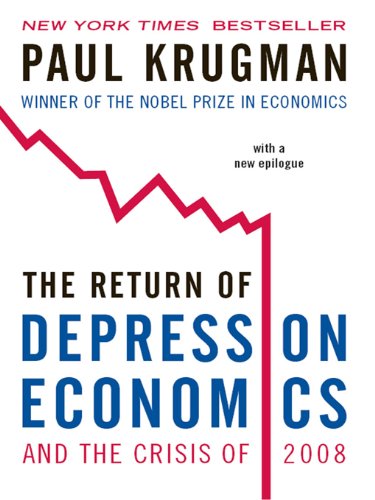Germany’s Hidden Crisis: Social Decile in the Heart of Europe, Oliver Nachtwey, Verso Books, 2018, pp. 247, $35.99, ISBN 978-1-78663-634-8
In the popular imagination, Germany is Europe’s most powerful economy and at the forefronts of industrial innovation. It is a country that keeps the other struggling economies afloat while making a killing in the process. Since 2010, Germany’s been buying Greek government bonds and has made €3.4 billion, while spending a mere €527 million. As of November 2018, after the Czech Republic, it had the lowest unemployment rate among the EU-28; the rate that has been declining steadily since 2007. In the same period, its GDP measured at market prices has topped the ranks.
In Serbia, the desire to move to Germany has grown so strong that the market (GiZ and the Serbian government) responded by opening up DIMAK, an employment center solely dedicated to providing information and services to potential economic migrants. The eminences stated that Germany is in need of health workers, particularly in gerontology, as well as low skilled workers, more poignantly translated from Serbian as “specialists without education”. These developments led to a popular joke, which began circulating the streets of Belgrade around that time, that said that University of Belgrade’s Faculty of Medicine plans to open up a new campus. In Berlin. The Serbs are not the only ones who dream of a better future in Germany. The country appears in the dreams of refugees, too. Ali himself aimed to reach Germany initially.
Is Germany really the new promised land?
Reading Oliver Nachtwey’s Germany’s Hidden Crisis, the clear answer would be a resounding no. Germany described by Nachtwey, a Frankfurt School professor, has been experiencing a steady decline since the post-World War II years. In other words, the sphere of visible social stability has begun shrinking. Capturing the decline in the late 20th and early 21st century, Nachtwey paints a gloomy picture of the employed people of Germany. Citing a 2012 study by the University of Duisburg-Essen, he states that one out of every four people in Germany received a wage below the low-wage threshold and that since 1995, the number of workers in the low wage sector has risen from 5.9 to 8.4 million. Since 2004, the working poor have nearly doubled – the sharpest rise in the whole of the European Union. In 2014, almost 10 percent of all workers suffered from poverty. A few years prior, in 2010, almost 16 percent of the entire German population was at risk from poverty, which meant they received less than 60 percent of the average equivalent income. 27 percent of these reported that they find it difficult to feed themselves adequately. Almost a quarter of the workers were atypically employed (precariously) in 2016. By 2016, the number of full time jobs has decreased by 1 million, while the number of part-time, temp jobs has increased by 4 million. Limited contract jobs have become the norm and the low-skilled workers must anticipate a frequent change of jobs. Moving up the ladder, one in three people belonging to the middle class reported that they would find it difficult to deal with an unexpected expense of €1000.
This gloomy situation developed out of social modernity which brought everyone up in the immediate post-World War II years. Nachtwey states that this period saw the rise of socially secured democracy in the Federal Republic. It was the time of Beck’s ‘elevator effect’, which allowed every social strata to enter and rise together bringing prosperity to all through a collective rise in education, income, rights and all the other joys of democracy. This was guaranteed by the interventionist state through its welfare policies. It was a time when by the end of the 1970s, almost half of the skilled workers owned their own home. Then the Nixon Shock struck and ushered the world in the neoliberal age.
In the early 1980s, political participation in democracy was replaced by economic participation in the market. Social citizenship was replaced by the economic one, guided by the doctrines of neoliberalism. According to Nachtway, the German society has fallen behind the levels reached during social modernity and the ‘elevator effect’ through a process he calls regressive modernization. In a true Frankfurt school style, he proceeds through contradictions and states that it is the very progress that contains within it societal regression. For example, education has expanded, but at the same time, qualifications are devalued through its expansion. More women are working, but generally in occupations associated with the extension of the household management – cleaners, cashiers, secretaries. Both partners work, but both earn less. In other words, the extension of economic citizenship has created protection of economic rights and the granting of equality of economic opportunity but has also parallelly created more inequality in terms of distribution of market gains. And the losers of the game are easy to spot as they are the usual suspects: women, migrants and the workers.
This was the revolt of capital. Social integration became an impediment to capital accumulation, and the former gave way to the latter.
Work centric society defines itself based on the social characteristics that work gives rise to. Integrative work offers social stability that manifests itself in social ascent. With its collapse and regressive modernization, the fears of downward mobility arise. In a context that erodes social integration through work by means of declining trade union activity and association, people fall back to strategies to make themselves more competitive in the market place. In turn, competition and the market penetrate the very existence of an individual. The marketization of everyday life leads the individual to abandon work-life balance and focus on performance and productivity as per market demands. These behaviors become pathological attempts at self-assertion. How many parents have enrolled their children in Mandarin classes at an early age for the hope of better integrating their children in the market economy based on the rise of China in order to secure their future? Instead of hoping to rise, the society fears of falling back.
Social breakdown naturally leads to revolt, as Polanyi eloquently captured in his ‘double-movement’. However, now these revolts arise in situations of social descent and breakdown where previously held ties are broken as they were predicated upon the existence of the welfare state, which has now disappeared. Social conflict is therefore restructured along different lines. This largely leads to confusion and misplaced aspirations so evident in protests around the world that ostensibly transcend ideological divides. The revolts have become episodic, selective and highly ineffectual. Composed of those whose elevators have gone up and stayed up, these revolts fail to build solidarity among the working poor, the young and the precarious. In a market society, revolt becomes an economic calculation on the part of those who can afford it. Political parties are freed from their anchoring within the larger population and are free to rule, rather than represent. This is evident in the strong disconnect between the policies handed down by the government and the wants of the people. The fact that this process continues indicates that the people themselves have grown to expect ever less from their governments while still firmly clinging on to the idea of democracy.
Nachtwey’s book, although dealing with the social condition of post-war Germany, is applicable to the world at large, as capitalism proceeds to erase the last vestiges of the welfare state. It is a useful contribution to the critique of our current predicament out of which different strategies aimed at building solidarity can arise.
Somebody should inform the Serbs.




